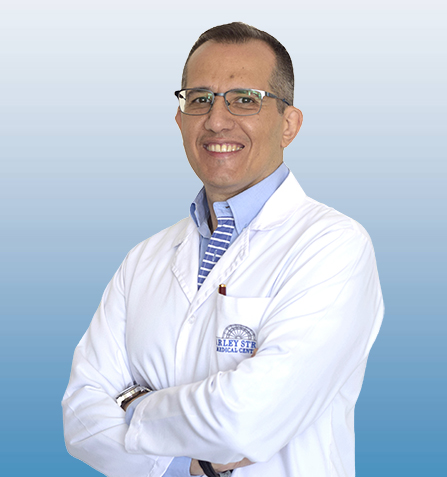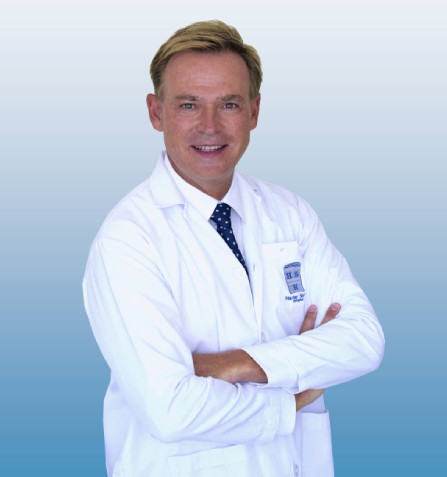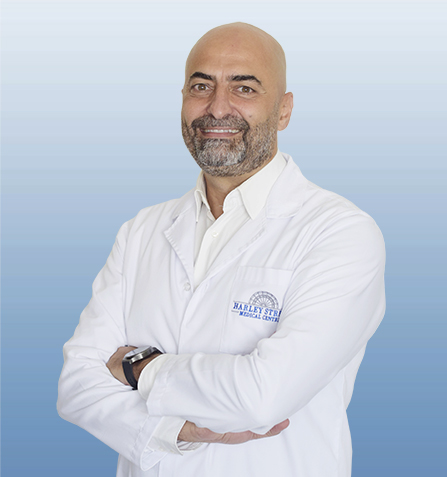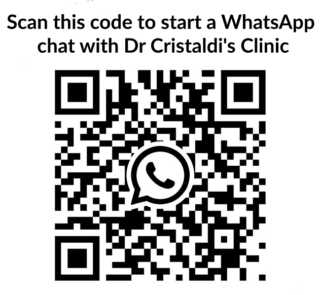ENDOSCOPY
We offer the best available technology on the market to assure that the quality of our endoscopic procedures is very accurate in term of detection of possible abnormalities and comfort for the patients. In particular we offer
- HD endoscopy, which allows the most detailed image definition;
- Narrow banding Imaging, which allows enhanced and more detailed view of the mucosa of the intestine making the detection of polyps easier and therefore reducing the chance of missing lesions during the procedures;
- CO2 insufflation endoscopy instead of using atmospheric air for inflation during the procedure. CO2 is a gas that has the property of diffusing through the intestine wall and getting absorbed, reducing therefore the occurrence of bloating and abdominal distension after the procedure.
UPPER GI ENDOSCOPY
Upper GI endoscopy is a procedure performed to diagnose and in some cases, treat problems of the upper digestive system.
Upper GI endoscopy can be helpful in the evaluation or diagnosis of various problems, including difficult or painful swallowing, pain in the stomach or abdomen, and bleeding, ulcers, and tumors.
- Benefits
- Indications
An upper GI endoscopy is both diagnostic and therapeutic. This means the test enables a diagnosis to be made upon which specific treatment can be given. If a bleeding site is identified, treatment can stop the bleeding, or if a polyp is found, it can be removed without a major operation. Other treatments can be given through the endoscope when necessary.
- Difficulty or pain on swallowing
- I. bleeding- hematemesis, melena, or iron-deficiency anemia
- Troublesome heartburn
- Persistent ulcer-like pain
- Dyspepsia
- With anorexia or weight loss
- Taking aspirin or NSAIDs
- With a history of gastric ulcer
- Persistent nausea, vomiting, or symptoms suggestive of pyloric obstruction
- Gastric ulcer demonstrated by barium meal
- Duodenal biopsy for suspected malabsorption
- Upper GI endoscopy is usually performed on an outpatient basis. The endoscope is a long, thin, flexible tube with a tiny video camera and light on the end. By adjusting the various controls on the endoscope, the endoscopist can safely guide the instrument to carefully examine the inside lining of the upper digestive system. The high quality picture from the endoscope is shown on a TV monitor; it gives a clear, detailed view. In many cases, upper GI endoscopy is a more precise examination than X-ray studies.
COLONOSCOPY
Colonoscopy is a procedure used to view large intestine (colon and rectum) using an instrument called colonoscope (a flexible tube with a small camera and lens attached). The procedure can detect inflamed tissue, ulcers, and abnormal growths. It is used to diagnose early signs of colorectal cancer, bowel disorders, abdominal pain, muscle spasms, inflamed tissue, ulcers, anal bleeding, and non-dietary weight loss.
The procedure is done under general anesthesia. The colonoscope is inserted into the rectum which gently moves up through the colon until it reaches the cecum (junction of small and large intestine). Colonoscopy provides an instant diagnosis of many conditions of the colon and is more sensitive than X-ray. The colonoscope is then withdrawn very slowly as the camera shows pictures of the colon and rectum onto a large screen. Polyps or growths can also be removed by colonoscopy which can be sent later for detection of cancer.
POLYPECTOMY
It is the surgical removal of a polyp. Polyps are non-cancerous abnormal growth of the tissue along the lining of gastrointestinal wall. Gastrointestinal polyps can be removed endoscopically through colonoscopy or surgically if the polyp is too large. During colonoscopy, the polyps are identified and cut using forceps. Larger polyps are removed by passing a wire snare, tightening the snare around the polyp base and then burning with electric cautery.
ENDOSCOPY INSTRUCTION & BOWEL PREPARATION
Your physician will provide you written instructions and also will be communicate verbally on how to get prepared for the colonoscopy procedure. The process is called bowel preparation.
There are two types of bowel before colonoscopy: Bowel preparation using Klean-prep and bowel preparation using Movi-Prep. Your doctor will discuss with you at the time of the consultation which one is the most appropriate and suitable for your case. Details of each type of bowel preparation are listed in the documents provided at the bottom of this paragraph called Patient Information Leaflet.
Very important:
Please note that in both types of bowel preparations the last sachet/liter of cleansing solution should be drunk on the day of the procedure 4 hours before coming to the hospital. Taking on to consideration that most of the procedures are performed during the morning it is inconvenient for most of the patients waking up very early in the morning and taking the last sachet/liter of preparation. For the above-mentioned reason we recommend that in case the procedure is schedule for the following morning, to complete the entire day before by midnight.
Upper gastrointestinal endoscopy usually lasts around 10 minutes which is the time to inspect the upper gastrointestinal tract up to the third duodenal portion and taking biopsies as indicated.
Colonoscopy usually lasts on average 15-20 minutes and under conscious sedation it is well tolerated by most of the patients. The amount of sedative is usually minimal and it fades away rapidly after the procedure is completed, allowing most of the patients to leave the hospital premises after 1 hour.
Results of the endoscopic procedures are usually communicated at the time of discharge by the doctor and the copy of the endoscopy report as well as discharge summary with postoperative instruction are handed over to the patient before going home.
If any biopsy has been taken results become usually available within 5 days and the doctor will arrange post-procedure follow-up within the right time frame, usually one week after the procedure.
Driving after endoscopic procedure is not permitted for 24 hours afterwards.
Patient can resume a normal life immediately after the procedure without any particular restriction unless indicated in the discharge summary






